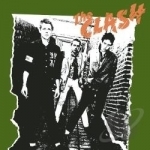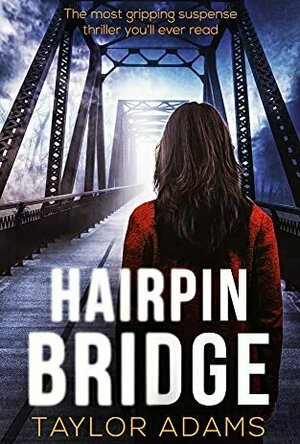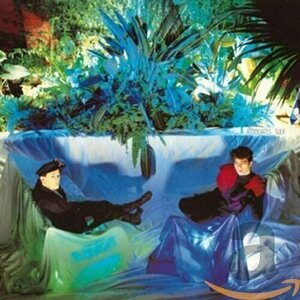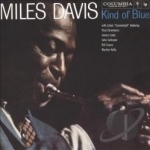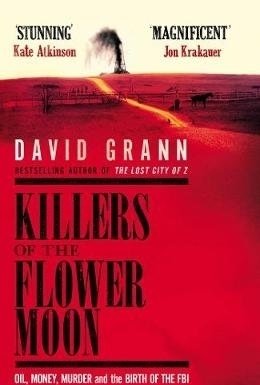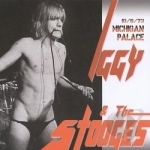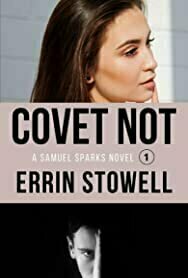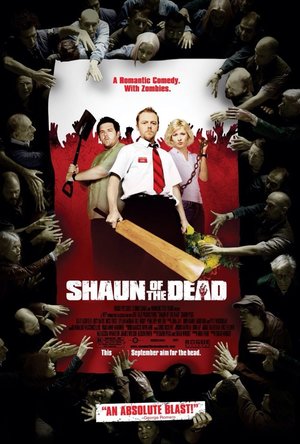Search
Search results
Duff McKagan recommended Clash by The Clash in Music (curated)
Kristy H (1252 KP) rated Hairpin Bridge in Books
Jun 17, 2021
A harrowing, page-turner of a thriller
Lena Nguyen arrives in Montana to figure out what happened to her twin sister, Cambry. Three months ago, Cambry supposedly committed suicide on Hairpin Bridge, but Lena simply cannot believe it's true. Now she's at the bridge, driving her sister's abandoned car, to find out what really happened. She's meeting Corporal Raymond Raycevic, the highway patrolman who found the body, at the scene itself. He seems apologetic and straightforward. Still, Lena remains suspicious. Records show Raycevic pulled Cambry over for speeding just a hour before her death. And what about the sixteen attempted 911 calls she made in the dead zone? Or the fact that Raycevic's name appears in the final text Lena ever received from Cambry? Despite the fact the sisters were basically estranged, Lena needs to know what happened to Cambry. But the more she digs, the more Lena's own survival may be in jeopardy out there on Hairpin Bridge.
"I have to know. What happened to you, Cambry?"
I actually read Adams' NO EXIT not that long ago and that book totally stressed me out. This one did the same, though thankfully a kid wasn't full and center. Goodness, he excels at writing at tense, action-packed books. This thriller certainly keeps you guessing--I was never exactly sure what was real or what was truly happening or had happened.
HAIRPIN BRIDGE, crazily enough, mostly takes place on a bridge (who knew?), but it alternates between the past and present. It's told in snippets, with Lena and Raycevic's perspectives in the here and now, and then pieces of Lena's blog, as well as what seems to be Cambry's past flashbacks, but could be Lena's own interpretation of what happened. This part was the hardest for me, as that was incredibly confusing. The idea is to keep you off-balance and prevent you from knowing what was really happening, but sometimes I felt a bit too confused.
This thriller feels more like a movie than a book at times, with its dramatic tension and constant "what on earth can happen next" feel. Lena comes across like an action hero in moments, and I often wondered what else Adams could throw at us. (Oh, he could come up with more insanity, don't worry.) The result is a book that's dark, action-packed, and sometimes completely horrifying. It's incredibly dramatic, but wow, does it keep you turning the pages. I know I finished this one in less than 24 hours. I absolutely had to find out what happened to Cambry, Lena, and Raycevic.
As I felt with NO EXIT, I'm not sure I really enjoyed this book. It's more that I survived it. I admire its structure, and it's great having a page-turner to fly through. I would have liked being a little less confused, but there were some great, terrifying twists here. If you don't mind a graphic and dark thriller, I recommend this one. 3.75/4 stars.
"I have to know. What happened to you, Cambry?"
I actually read Adams' NO EXIT not that long ago and that book totally stressed me out. This one did the same, though thankfully a kid wasn't full and center. Goodness, he excels at writing at tense, action-packed books. This thriller certainly keeps you guessing--I was never exactly sure what was real or what was truly happening or had happened.
HAIRPIN BRIDGE, crazily enough, mostly takes place on a bridge (who knew?), but it alternates between the past and present. It's told in snippets, with Lena and Raycevic's perspectives in the here and now, and then pieces of Lena's blog, as well as what seems to be Cambry's past flashbacks, but could be Lena's own interpretation of what happened. This part was the hardest for me, as that was incredibly confusing. The idea is to keep you off-balance and prevent you from knowing what was really happening, but sometimes I felt a bit too confused.
This thriller feels more like a movie than a book at times, with its dramatic tension and constant "what on earth can happen next" feel. Lena comes across like an action hero in moments, and I often wondered what else Adams could throw at us. (Oh, he could come up with more insanity, don't worry.) The result is a book that's dark, action-packed, and sometimes completely horrifying. It's incredibly dramatic, but wow, does it keep you turning the pages. I know I finished this one in less than 24 hours. I absolutely had to find out what happened to Cambry, Lena, and Raycevic.
As I felt with NO EXIT, I'm not sure I really enjoyed this book. It's more that I survived it. I admire its structure, and it's great having a page-turner to fly through. I would have liked being a little less confused, but there were some great, terrifying twists here. If you don't mind a graphic and dark thriller, I recommend this one. 3.75/4 stars.
Shirley Manson recommended Sulk by The Associates in Music (curated)
Hazel (1853 KP) rated The Music Shop in Books
Aug 22, 2017
Learning to listen
This eBook was provided by the publisher via NetGalley in exchange for an honest review
From the author of The Unlikely Pilgrimage of Harold Fry comes a unique and beautiful story about music and learning how to listen. The Music Shop by Rachel Joyce takes readers on a journey through the developing music world of the late 1980s when CDs are beginning to wipe out all other means of recording music – a complete disaster for someone like Frank, the owner of the music shop, who only sells vinyl.
The book begins in 1988 in a crumbling down street where shopkeepers are barely making enough money to survive. Frank’s shop is one of the few remaining and, despite everything against him, is determined to keep going. Not only does he sell vinyl records, Frank has an empathetic gift allowing him to sense exactly what a customer needs to listen to, even though they may not realise it themselves. However, one day, Frank’s world is turned upside down by the arrival of a young German woman, Ilse Brauchmann, who faints on his doorstep.
Ilse intrigues all of the shopkeepers on Unity Street, particularly Frank’s teenaged assistant, Kit. Although Frank tries to deny it, Ilse also fascinates him to the point that he is rarely thinking of anything else. But what concerns him most is that he cannot pinpoint what piece of music she ought to listen to. When questioned, Ilse admits she knows nothing about music and begs Frank to give her lessons. These lessons have nothing to do with instruments – Frank is the least qualified to teach such a thing – but about how to listen to music. How to hear the pauses in classical pieces; understand the meaning behind Beethoven’s sonatas; feel the passion behind punk music; learn to love a number of composers for the things many people miss.
The longer Frank spends around Ilse, the more he begins to fall in love. However, love is something Frank denies himself ever since the death of his mother fifteen years previously. Written in italics are flashback chapters explaining how Frank’s love of music came about, his relationship with his mother, and how he ended up as a dead-end vinyl seller. Due to his fear of intimate relationships, Frank keeps pushing Ilse away until, one day, he realises how much he needs her. But, he may have left it too late.
The Music Shop is split into four sections, or sides (a reference to vinyl records). Side A introduces the characters and settings during a wintery January when Frank is beginning to struggle with the competition caused by the recently opened Woolworths on the nearby high street. Sides B and C focus on the development of Frank and Ilse’s friendship, the secrets they hide from each other and the foreboding sense of disaster hanging over the one-of-a-kind music shop.
As Frank begins to realise how much Ilse means to him, the sudden appearance of side D will break readers’ hearts. Whilst sides A, B and C take place in 1988, side D jumps forward 21 years to 2009. It appears Frank and Ilse never got the relationship they deserved. Two unhappy decades have been and gone, demolishing any resemblance of the way life used to be. However, because there is a side D, readers can only hope it will result in a happy ending.
The Music Shop is a love story between two quiet, modest characters whose past and present circumstances get in the way of a peaceful future. However, it is not only a piece of romantic fiction. Rachel Joyce writes a message in story format about second chances and being brave. Learning to listen does not only apply to music, it applies to hearing what other people are saying and what they are not; most importantly, the book urges people to listen to themselves.
The research undertaken for this novel is phenomenal. For starters, it is set almost thirty years ago when vinyl was only beginning to go out of fashion. The quality of music and the access people had to it was extremely different to the simplicity of today where it is possible to download everything at the press of a button. The breadth of music genre is as wide as possible. Every type of music is covered from Handel’s Messiah to Aretha Franklin and The Sex Pistols. To be able to discuss such a range without falling into stereotypes is a feat worthy of congratulating.
The Music Shop far surpasses anything Rachel Joyce has written so far. The story is fragile in a beautiful way, its delicacy causing the reader to treat it with care, rather than rush through it like some mundane piece of fiction. It will interest a whole host of readers: male and female, music lovers and those with a preference for silence. Whoever you are, be prepared to take something away from this distinctive, outstanding novel.
From the author of The Unlikely Pilgrimage of Harold Fry comes a unique and beautiful story about music and learning how to listen. The Music Shop by Rachel Joyce takes readers on a journey through the developing music world of the late 1980s when CDs are beginning to wipe out all other means of recording music – a complete disaster for someone like Frank, the owner of the music shop, who only sells vinyl.
The book begins in 1988 in a crumbling down street where shopkeepers are barely making enough money to survive. Frank’s shop is one of the few remaining and, despite everything against him, is determined to keep going. Not only does he sell vinyl records, Frank has an empathetic gift allowing him to sense exactly what a customer needs to listen to, even though they may not realise it themselves. However, one day, Frank’s world is turned upside down by the arrival of a young German woman, Ilse Brauchmann, who faints on his doorstep.
Ilse intrigues all of the shopkeepers on Unity Street, particularly Frank’s teenaged assistant, Kit. Although Frank tries to deny it, Ilse also fascinates him to the point that he is rarely thinking of anything else. But what concerns him most is that he cannot pinpoint what piece of music she ought to listen to. When questioned, Ilse admits she knows nothing about music and begs Frank to give her lessons. These lessons have nothing to do with instruments – Frank is the least qualified to teach such a thing – but about how to listen to music. How to hear the pauses in classical pieces; understand the meaning behind Beethoven’s sonatas; feel the passion behind punk music; learn to love a number of composers for the things many people miss.
The longer Frank spends around Ilse, the more he begins to fall in love. However, love is something Frank denies himself ever since the death of his mother fifteen years previously. Written in italics are flashback chapters explaining how Frank’s love of music came about, his relationship with his mother, and how he ended up as a dead-end vinyl seller. Due to his fear of intimate relationships, Frank keeps pushing Ilse away until, one day, he realises how much he needs her. But, he may have left it too late.
The Music Shop is split into four sections, or sides (a reference to vinyl records). Side A introduces the characters and settings during a wintery January when Frank is beginning to struggle with the competition caused by the recently opened Woolworths on the nearby high street. Sides B and C focus on the development of Frank and Ilse’s friendship, the secrets they hide from each other and the foreboding sense of disaster hanging over the one-of-a-kind music shop.
As Frank begins to realise how much Ilse means to him, the sudden appearance of side D will break readers’ hearts. Whilst sides A, B and C take place in 1988, side D jumps forward 21 years to 2009. It appears Frank and Ilse never got the relationship they deserved. Two unhappy decades have been and gone, demolishing any resemblance of the way life used to be. However, because there is a side D, readers can only hope it will result in a happy ending.
The Music Shop is a love story between two quiet, modest characters whose past and present circumstances get in the way of a peaceful future. However, it is not only a piece of romantic fiction. Rachel Joyce writes a message in story format about second chances and being brave. Learning to listen does not only apply to music, it applies to hearing what other people are saying and what they are not; most importantly, the book urges people to listen to themselves.
The research undertaken for this novel is phenomenal. For starters, it is set almost thirty years ago when vinyl was only beginning to go out of fashion. The quality of music and the access people had to it was extremely different to the simplicity of today where it is possible to download everything at the press of a button. The breadth of music genre is as wide as possible. Every type of music is covered from Handel’s Messiah to Aretha Franklin and The Sex Pistols. To be able to discuss such a range without falling into stereotypes is a feat worthy of congratulating.
The Music Shop far surpasses anything Rachel Joyce has written so far. The story is fragile in a beautiful way, its delicacy causing the reader to treat it with care, rather than rush through it like some mundane piece of fiction. It will interest a whole host of readers: male and female, music lovers and those with a preference for silence. Whoever you are, be prepared to take something away from this distinctive, outstanding novel.
Hazel (1853 KP) rated The Music Shop in Books
Dec 7, 2018
<i>This eBook was provided by the publisher via NetGalley in exchange for an honest review </i>
From the author of <i>The Unlikely Pilgrimage of Harold Fry </i>comes a unique and beautiful story about music and learning how to listen. <i>The Music Shop</i> by Rachel Joyce takes readers on a journey through the developing music world of the late 1980s when CDs are beginning to wipe out all other means of recording music – a complete disaster for someone like Frank, the owner of the music shop, who only sells vinyl.
The book begins in 1988 in a crumbling down street where shopkeepers are barely making enough money to survive. Frank’s shop is one of the few remaining and, despite everything against him, is determined to keep going. Not only does he sell vinyl records, Frank has an empathetic gift allowing him to sense exactly what a customer needs to listen to, even though they may not realise it themselves. However, one day, Frank’s world is turned upside down by the arrival of a young German woman, Ilse Brauchmann, who faints on his doorstep.
Ilse intrigues all of the shopkeepers on Unity Street, particularly Frank’s teenaged assistant, Kit. Although Frank tries to deny it, Ilse also fascinates him to the point that he is rarely thinking of anything else. But what concerns him most is that he cannot pinpoint what piece of music she ought to listen to. When questioned, Ilse admits she knows nothing about music and begs Frank to give her lessons. These lessons have nothing to do with instruments – Frank is the least qualified to teach such a thing – but about how to listen to music. How to hear the pauses in classical pieces; understand the meaning behind Beethoven’s sonatas; feel the passion behind punk music; learn to love a number of composers for the things many people miss.
The longer Frank spends around Ilse, the more he begins to fall in love. However, love is something Frank denies himself ever since the death of his mother fifteen years previously. Written in italics are flashback chapters explaining how Frank’s love of music came about, his relationship with his mother, and how he ended up as a dead-end vinyl seller. Due to his fear of intimate relationships, Frank keeps pushing Ilse away until, one day, he realises how much he needs her. But, he may have left it too late.
<i>The Music Shop</i> is split into four sections, or sides (a reference to vinyl records). Side A introduces the characters and settings during a wintery January when Frank is beginning to struggle with the competition caused by the recently opened Woolworths on the nearby high street. Sides B and C focus on the development of Frank and Ilse’s friendship, the secrets they hide from each other and the foreboding sense of disaster hanging over the one-of-a-kind music shop.
As Frank begins to realise how much Ilse means to him, the sudden appearance of side D will break readers’ hearts. Whilst sides A, B and C take place in 1988, side D jumps forward 21 years to 2009. It appears Frank and Ilse never got the relationship they deserved. Two unhappy decades have been and gone, demolishing any resemblance of the way life used to be. However, because there is a side D, readers can only hope it will result in a happy ending.
<i>The Music Shop</i> is a love story between two quiet, modest characters whose past and present circumstances get in the way of a peaceful future. However, it is not only a piece of romantic fiction. Rachel Joyce writes a message in story format about second chances and being brave. Learning to listen does not only apply to music, it applies to hearing what other people are saying and what they are not; most importantly, the book urges people to listen to themselves.
The research undertaken for this novel is phenomenal. For starters, it is set almost thirty years ago when vinyl was only beginning to go out of fashion. The quality of music and the access people had to it was extremely different to the simplicity of today where it is possible to download everything at the press of a button. The breadth of music genre is as wide as possible. Every type of music is covered from Handel’s <i>Messiah</i> to Aretha Franklin and The Sex Pistols. To be able to discuss such a range without falling into stereotypes is a feat worthy of congratulating.
<i>The Music Shop</i> far surpasses anything Rachel Joyce has written so far. The story is fragile in a beautiful way, its delicacy causing the reader to treat it with care, rather than rush through it like some mundane piece of fiction. It will interest a whole host of readers: male and female, music lovers and those with a preference for silence. Whoever you are, be prepared to take something away from this distinctive, outstanding novel.
From the author of <i>The Unlikely Pilgrimage of Harold Fry </i>comes a unique and beautiful story about music and learning how to listen. <i>The Music Shop</i> by Rachel Joyce takes readers on a journey through the developing music world of the late 1980s when CDs are beginning to wipe out all other means of recording music – a complete disaster for someone like Frank, the owner of the music shop, who only sells vinyl.
The book begins in 1988 in a crumbling down street where shopkeepers are barely making enough money to survive. Frank’s shop is one of the few remaining and, despite everything against him, is determined to keep going. Not only does he sell vinyl records, Frank has an empathetic gift allowing him to sense exactly what a customer needs to listen to, even though they may not realise it themselves. However, one day, Frank’s world is turned upside down by the arrival of a young German woman, Ilse Brauchmann, who faints on his doorstep.
Ilse intrigues all of the shopkeepers on Unity Street, particularly Frank’s teenaged assistant, Kit. Although Frank tries to deny it, Ilse also fascinates him to the point that he is rarely thinking of anything else. But what concerns him most is that he cannot pinpoint what piece of music she ought to listen to. When questioned, Ilse admits she knows nothing about music and begs Frank to give her lessons. These lessons have nothing to do with instruments – Frank is the least qualified to teach such a thing – but about how to listen to music. How to hear the pauses in classical pieces; understand the meaning behind Beethoven’s sonatas; feel the passion behind punk music; learn to love a number of composers for the things many people miss.
The longer Frank spends around Ilse, the more he begins to fall in love. However, love is something Frank denies himself ever since the death of his mother fifteen years previously. Written in italics are flashback chapters explaining how Frank’s love of music came about, his relationship with his mother, and how he ended up as a dead-end vinyl seller. Due to his fear of intimate relationships, Frank keeps pushing Ilse away until, one day, he realises how much he needs her. But, he may have left it too late.
<i>The Music Shop</i> is split into four sections, or sides (a reference to vinyl records). Side A introduces the characters and settings during a wintery January when Frank is beginning to struggle with the competition caused by the recently opened Woolworths on the nearby high street. Sides B and C focus on the development of Frank and Ilse’s friendship, the secrets they hide from each other and the foreboding sense of disaster hanging over the one-of-a-kind music shop.
As Frank begins to realise how much Ilse means to him, the sudden appearance of side D will break readers’ hearts. Whilst sides A, B and C take place in 1988, side D jumps forward 21 years to 2009. It appears Frank and Ilse never got the relationship they deserved. Two unhappy decades have been and gone, demolishing any resemblance of the way life used to be. However, because there is a side D, readers can only hope it will result in a happy ending.
<i>The Music Shop</i> is a love story between two quiet, modest characters whose past and present circumstances get in the way of a peaceful future. However, it is not only a piece of romantic fiction. Rachel Joyce writes a message in story format about second chances and being brave. Learning to listen does not only apply to music, it applies to hearing what other people are saying and what they are not; most importantly, the book urges people to listen to themselves.
The research undertaken for this novel is phenomenal. For starters, it is set almost thirty years ago when vinyl was only beginning to go out of fashion. The quality of music and the access people had to it was extremely different to the simplicity of today where it is possible to download everything at the press of a button. The breadth of music genre is as wide as possible. Every type of music is covered from Handel’s <i>Messiah</i> to Aretha Franklin and The Sex Pistols. To be able to discuss such a range without falling into stereotypes is a feat worthy of congratulating.
<i>The Music Shop</i> far surpasses anything Rachel Joyce has written so far. The story is fragile in a beautiful way, its delicacy causing the reader to treat it with care, rather than rush through it like some mundane piece of fiction. It will interest a whole host of readers: male and female, music lovers and those with a preference for silence. Whoever you are, be prepared to take something away from this distinctive, outstanding novel.
Mick Hucknall recommended Kind of Blue by Miles Davis in Music (curated)
Suswatibasu (1701 KP) rated Killers of the Flower Moon: The Osage Murder and the Birth of the FBI in Books
Nov 24, 2017 (Updated Nov 24, 2017)
Mind-blowing and a disconcerting read
I can say without a doubt, this is one of the best novels I've read this year. It is a disturbing and excellent real-life account of the plight of Native Americans who found themselves the unwitting beneficiaries of a financial boom in the 1920's after oil was discovered under the previously barren and worthless reservation they were moved to.
This fantastic book relates to a story covered in blood, racism and greed. Oil, black gold, made the Plains Osage tribe incredibly wealthy. By the 1890's, the remnants of this great people were in the scrub lands of Northern Oklahoma.
Their life was continually harsh, the soil poor. In the late 1890's, by chance, oil was struck in Osage County, flowing in abundance and in great demand. From 1918 to 1928, $202 million was paid to the tribe which by then numbered around 3000, transforming their lives. 680 barrels were obtained in a day in 1920 from a strike at Burbank, angering the whites and thus began the "Reign of Terror" in which hundreds of the Osage tribe members were subsequently killed in the most horrendous display of corruption.
The book itself begins in 1921 with an Osage woman who had a share of the mineral riches to be found under the Osage land. Mollie like others was subject to a law that treated her tribe as juveniles whose estates had to be administered by white guardians, that is local lawyers and businessmen, appointed by local courts.
Guardianship was unpoliced and few records were kept. Fraud was therefore prevalent and many of the local white community participated in corruption - murder was widespread as a result. Mollie's sister, Anna, was the first noticeable murder in which she was shot and killed, launching a major probe into similar killings in the area. Many other murders were committed over the following years, with poisoning as the most common method of killing. Essentially it was a covert form of genocide.
The locals refused to act, partly due to fear or involvement in this heinous plot, so J. Edgar Hoover, who was the first president of the FBI, became involved in the investigation. He sent a tall Texas Ranger called Tom White to scrutinise an epic series of murders in which even investigators were targets.
What follows is not only history but a riveting detective story and the book demonstrates yet again the enormous cost of American nationhood. It provides some fascinating insight into the early workings of the FBI (not least Hoover's nascent megalomania) for whom this was a celebrated case and a valuable reminder for folk who thought the persecution of American Indians ended in the late 19th century. Author and journalist David Grann does a superb job in collating all of the information with dozens of pages solely highlighting attributions and references - it is thorough and well-researched. Therefore it is hardly surprising that Hollywood has snapped up this book to turn it into a major motion picture - let's hope they don't whitewash history once again.
This fantastic book relates to a story covered in blood, racism and greed. Oil, black gold, made the Plains Osage tribe incredibly wealthy. By the 1890's, the remnants of this great people were in the scrub lands of Northern Oklahoma.
Their life was continually harsh, the soil poor. In the late 1890's, by chance, oil was struck in Osage County, flowing in abundance and in great demand. From 1918 to 1928, $202 million was paid to the tribe which by then numbered around 3000, transforming their lives. 680 barrels were obtained in a day in 1920 from a strike at Burbank, angering the whites and thus began the "Reign of Terror" in which hundreds of the Osage tribe members were subsequently killed in the most horrendous display of corruption.
The book itself begins in 1921 with an Osage woman who had a share of the mineral riches to be found under the Osage land. Mollie like others was subject to a law that treated her tribe as juveniles whose estates had to be administered by white guardians, that is local lawyers and businessmen, appointed by local courts.
Guardianship was unpoliced and few records were kept. Fraud was therefore prevalent and many of the local white community participated in corruption - murder was widespread as a result. Mollie's sister, Anna, was the first noticeable murder in which she was shot and killed, launching a major probe into similar killings in the area. Many other murders were committed over the following years, with poisoning as the most common method of killing. Essentially it was a covert form of genocide.
The locals refused to act, partly due to fear or involvement in this heinous plot, so J. Edgar Hoover, who was the first president of the FBI, became involved in the investigation. He sent a tall Texas Ranger called Tom White to scrutinise an epic series of murders in which even investigators were targets.
What follows is not only history but a riveting detective story and the book demonstrates yet again the enormous cost of American nationhood. It provides some fascinating insight into the early workings of the FBI (not least Hoover's nascent megalomania) for whom this was a celebrated case and a valuable reminder for folk who thought the persecution of American Indians ended in the late 19th century. Author and journalist David Grann does a superb job in collating all of the information with dozens of pages solely highlighting attributions and references - it is thorough and well-researched. Therefore it is hardly surprising that Hollywood has snapped up this book to turn it into a major motion picture - let's hope they don't whitewash history once again.
Johnny Marr recommended track Gimme Danger by Iggy And The Stooges in Michigan Palace, 10/6/73 by Iggy And The Stooges in Music (curated)
Writing (3 more)
No character development
Too many inconsistencies
Too many chapters
Errin Stowell's new novel series starts with Covet Not which is about a middle-aged lawyer named Sam Sparks - - - who is referred to as Sparks nearly the entire story - - - whose fiancee goes missing and he then becomes the prime suspect. Before everything happens though, readers see that Sparks spends his time trying to defend the elderly from home foreclosures as a small-time lawyer.
If this sounds like a synopsis for a John Grisham novel, you wouldn't be far off because Stowell has the potential to be the next one. This is only the first novel I've read by Stowell, but the one thing I noticed mostly in this story was the amount of inconsistencies and amateur writing mistakes; with better editing and consistency, his books could very well hit mainstream.
Also, Covet Not had so many chapters, so much so that scenes were chopped in half and made into entirely new chapters. The book ended up having 48 chapters within 158 pages. This amount could have easily been shortened and helped with the flow of the story if Stowell had just continued onwards with scenes rather then cutting them short or just skipping parts completely.
The novel starts with a man called Skinny who is enjoying his growing infamy on the dark web (he records himself murdering women then uploads it for his audience to enjoy). Here is how Stowell describes Skinny's thought process:
" Skinny took a black ski mask from the duffel bag and put it on before carrying the bag into the camera's frame and placing it near the woman. He began unpacking other items from the bag. It was slow work, deliberately slow for the camera. Skinny intended to have a before and after view for each tool. It was important to show the proper use of tools. The viewers always appreciated that. "
When we switch over to Sparks, we find him after a long day of work, speaking with a journalist named Gina, his fiancee, who is telling him one of her co-workers stole her story, but no one has heard from her in two days. Yet, they both agree that she's probably holed up with one of the producers, and instead, get into a small argument about Sparks never supporting Gina - - - a constant habit of arguing is almost every interaction between the two throughout the entire novel.
Soon after, Sparks introduces us to his uncle Jimmy, who is being housed at a retirement home: " The old man was seated in a wheelchair; his left leg had been amputated just below the knee a few years before, the result of allowing an ingrown toenail to fester to gangrene. Jimmy's barrel chest and solid upper body contrasted with his wasting legs. "
As Sparks continues to visit his uncle in the retirement home, he keeps running into a cute nurse named Darlene, who quickly sets her sights on him. She goes so far out of her way to get Sparks and Gina to separate that she sends him nude photos of herself from a burner phone. Fortunately, Sparks has bigger fish to fry when he hears over his car radio that Gina's co-worker was now being treated as a missing person case, causing Sparks to quickly jump to the conclusion that Gina possibly was responsible for it.
However, Stowell throws in an expected curveball by making our villain, Skinny, work at the retirement home. When he comes in to take care of a patient while Sparks is present, it's too easy to guess that this patient was going to end up dead soon. Sparks, expectedly, has a bad feeling about this male nurse, but dismisses it and believes that the patient died by natural causes. Life goes on.
Stowell's novel, with a great plot, was just too focused on ending the story, that after page 50, it seemed as if Stowell didn't care what happened to these characters, just as long as he finished the book. At one point, readers are told that Sparks doesn't drink alcohol, but it's never explained why he doesn't which would have given a bite of character development; another scene, Sparks finds a phone, but doesn't want to give it to police, instead he states that he has a 'friend' in the police department who can go through it as a favor, but this 'friend' is completely forgotten, as if Sparks never mentioned him, and the former is left dumbfounded as to how to get into the phone.
There's a story here and characters that could be more well-rounded, but I honestly found myself not caring the least bit about any of the characters' well-being, especially Sparks - - - someone who comes off as inept, someone who has to be told what to do in order for anything to get done - - - he's like a lost child running blindly throughout the book. The story needs to be longer with more emphasis given to mundane scenes that will allow readers to chew on a piece of Sparks' daily life because, by the end of the book, we needed a full picture of every major character, not a Jackson Pollock.
If this sounds like a synopsis for a John Grisham novel, you wouldn't be far off because Stowell has the potential to be the next one. This is only the first novel I've read by Stowell, but the one thing I noticed mostly in this story was the amount of inconsistencies and amateur writing mistakes; with better editing and consistency, his books could very well hit mainstream.
Also, Covet Not had so many chapters, so much so that scenes were chopped in half and made into entirely new chapters. The book ended up having 48 chapters within 158 pages. This amount could have easily been shortened and helped with the flow of the story if Stowell had just continued onwards with scenes rather then cutting them short or just skipping parts completely.
The novel starts with a man called Skinny who is enjoying his growing infamy on the dark web (he records himself murdering women then uploads it for his audience to enjoy). Here is how Stowell describes Skinny's thought process:
" Skinny took a black ski mask from the duffel bag and put it on before carrying the bag into the camera's frame and placing it near the woman. He began unpacking other items from the bag. It was slow work, deliberately slow for the camera. Skinny intended to have a before and after view for each tool. It was important to show the proper use of tools. The viewers always appreciated that. "
When we switch over to Sparks, we find him after a long day of work, speaking with a journalist named Gina, his fiancee, who is telling him one of her co-workers stole her story, but no one has heard from her in two days. Yet, they both agree that she's probably holed up with one of the producers, and instead, get into a small argument about Sparks never supporting Gina - - - a constant habit of arguing is almost every interaction between the two throughout the entire novel.
Soon after, Sparks introduces us to his uncle Jimmy, who is being housed at a retirement home: " The old man was seated in a wheelchair; his left leg had been amputated just below the knee a few years before, the result of allowing an ingrown toenail to fester to gangrene. Jimmy's barrel chest and solid upper body contrasted with his wasting legs. "
As Sparks continues to visit his uncle in the retirement home, he keeps running into a cute nurse named Darlene, who quickly sets her sights on him. She goes so far out of her way to get Sparks and Gina to separate that she sends him nude photos of herself from a burner phone. Fortunately, Sparks has bigger fish to fry when he hears over his car radio that Gina's co-worker was now being treated as a missing person case, causing Sparks to quickly jump to the conclusion that Gina possibly was responsible for it.
However, Stowell throws in an expected curveball by making our villain, Skinny, work at the retirement home. When he comes in to take care of a patient while Sparks is present, it's too easy to guess that this patient was going to end up dead soon. Sparks, expectedly, has a bad feeling about this male nurse, but dismisses it and believes that the patient died by natural causes. Life goes on.
Stowell's novel, with a great plot, was just too focused on ending the story, that after page 50, it seemed as if Stowell didn't care what happened to these characters, just as long as he finished the book. At one point, readers are told that Sparks doesn't drink alcohol, but it's never explained why he doesn't which would have given a bite of character development; another scene, Sparks finds a phone, but doesn't want to give it to police, instead he states that he has a 'friend' in the police department who can go through it as a favor, but this 'friend' is completely forgotten, as if Sparks never mentioned him, and the former is left dumbfounded as to how to get into the phone.
There's a story here and characters that could be more well-rounded, but I honestly found myself not caring the least bit about any of the characters' well-being, especially Sparks - - - someone who comes off as inept, someone who has to be told what to do in order for anything to get done - - - he's like a lost child running blindly throughout the book. The story needs to be longer with more emphasis given to mundane scenes that will allow readers to chew on a piece of Sparks' daily life because, by the end of the book, we needed a full picture of every major character, not a Jackson Pollock.
Sarah (7798 KP) rated Shaun of the Dead (2004) in Movies
Dec 26, 2020 (Updated Dec 26, 2020)
Zombie hilarity
Film #8 on the 100 Movies Bucket List: Shaun of the Dead
Shaun of the Dead (2004) is the first film in the Cornetto trilogy, a series of films directed by Edgar Wright and starring Simon Pegg and Nick Frost. I have to admit I’m a little biased when it comes to Shaun and 2007’s Hot Fuzz (shameful that this isn’t also on the bucket list), the first two films in the trilogy, as they’re two of my comedy favourites and films I can quote far too much from. And as zombie horror comedies go, you can’t get much better than Shaun of the Dead.
The film follows Shaun (Simon Pegg), a hopeless boyfriend who shares a house with his slacker friend Ed (Nick Frost) and stickler Pete (Peter Serafinowicz), while he tried to save his Rocky relationship with girlfriend Liz (Kate Ashfield) whilst trying to battle his way through a zombie apocalypse. The best thing about Shaun of the Dead is how it follows Shaun trudging almost zombie like through his own life, while in the background a real zombie apocalypse is breaking out. It’s so incredibly fun watching all of the zombie related acts in the background that the main characters are completely oblivious about, and not only is it funny, it’s also a rather clever commentary on the state of our culture and society – I’m sure we could all imagine this oblivious self absorbed attitude being very much present in a lot of people if a zombie apocalypse ever really happened.
Shaun also succeeds due to the incredibly clever and witty script and the gags that don’t ever seem to let up. From the subtle zombie nods in the beginning to the wisecracking and snide remarks between Shaun, Ed and virtually everyone else in Shaun’s life, this film is hilarious and infectiously quotable. The zombie apocalypse is tackled in such a typically British way, and not only is this funny but it’s incredibly refreshing too when compared to the overly stylish guns ‘n’ ammo style zombie films we’re used to from across the pond. How often do you see character trying to kill zombies with records before settling down with a cup of tea and a cornetto? It’s a work of genius.
The cast too are equally responsible for how good this film is, and do a great job with the script and pace. Not only do you have the charismatic pairing of Pegg and Frost who’s chemistry is undeniable, there’s also an excellent supporting cast with some rather big names in the UK industry: Bill Nighy, Jessica Hynes, Dylan Moran, Lucy Davis and Penelope Wilton. And some blink and you’ll miss it cameos from comedy greats Matt Lucas, Reece Shearsmith and Tamsin Greig. These names paired with Edgar Wright’s well paced directing style makes for an engaging film.
Shaun of the Dead is basically a big screen zombie version of Spaced, and this definitely isn’t a bad thing. The only negative about this, especially watching it 16 years later, is that it seems so obviously low budget which I think has only been made more obvious with age. Even in HD it does look a tad aged which is a shame, but the amount of blood and gore is still impressive for a 15 rated film.
Despite it’s age, Shaun of the Dead is one of the best zombie films out there and the fact that it’s hilarious too just makes it even better. And after watching this, you’ll never think of Queen’s Don’t Stop Me Now in the same way again.
Shaun of the Dead (2004) is the first film in the Cornetto trilogy, a series of films directed by Edgar Wright and starring Simon Pegg and Nick Frost. I have to admit I’m a little biased when it comes to Shaun and 2007’s Hot Fuzz (shameful that this isn’t also on the bucket list), the first two films in the trilogy, as they’re two of my comedy favourites and films I can quote far too much from. And as zombie horror comedies go, you can’t get much better than Shaun of the Dead.
The film follows Shaun (Simon Pegg), a hopeless boyfriend who shares a house with his slacker friend Ed (Nick Frost) and stickler Pete (Peter Serafinowicz), while he tried to save his Rocky relationship with girlfriend Liz (Kate Ashfield) whilst trying to battle his way through a zombie apocalypse. The best thing about Shaun of the Dead is how it follows Shaun trudging almost zombie like through his own life, while in the background a real zombie apocalypse is breaking out. It’s so incredibly fun watching all of the zombie related acts in the background that the main characters are completely oblivious about, and not only is it funny, it’s also a rather clever commentary on the state of our culture and society – I’m sure we could all imagine this oblivious self absorbed attitude being very much present in a lot of people if a zombie apocalypse ever really happened.
Shaun also succeeds due to the incredibly clever and witty script and the gags that don’t ever seem to let up. From the subtle zombie nods in the beginning to the wisecracking and snide remarks between Shaun, Ed and virtually everyone else in Shaun’s life, this film is hilarious and infectiously quotable. The zombie apocalypse is tackled in such a typically British way, and not only is this funny but it’s incredibly refreshing too when compared to the overly stylish guns ‘n’ ammo style zombie films we’re used to from across the pond. How often do you see character trying to kill zombies with records before settling down with a cup of tea and a cornetto? It’s a work of genius.
The cast too are equally responsible for how good this film is, and do a great job with the script and pace. Not only do you have the charismatic pairing of Pegg and Frost who’s chemistry is undeniable, there’s also an excellent supporting cast with some rather big names in the UK industry: Bill Nighy, Jessica Hynes, Dylan Moran, Lucy Davis and Penelope Wilton. And some blink and you’ll miss it cameos from comedy greats Matt Lucas, Reece Shearsmith and Tamsin Greig. These names paired with Edgar Wright’s well paced directing style makes for an engaging film.
Shaun of the Dead is basically a big screen zombie version of Spaced, and this definitely isn’t a bad thing. The only negative about this, especially watching it 16 years later, is that it seems so obviously low budget which I think has only been made more obvious with age. Even in HD it does look a tad aged which is a shame, but the amount of blood and gore is still impressive for a 15 rated film.
Despite it’s age, Shaun of the Dead is one of the best zombie films out there and the fact that it’s hilarious too just makes it even better. And after watching this, you’ll never think of Queen’s Don’t Stop Me Now in the same way again.
